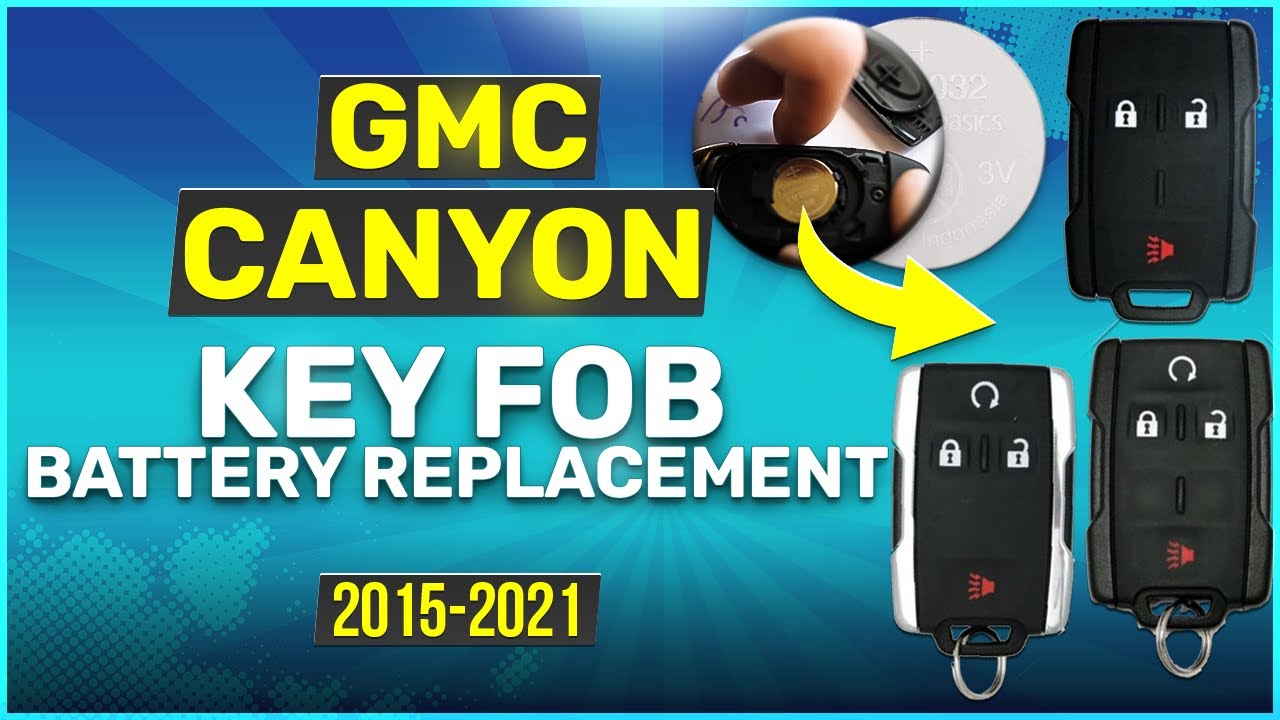Introduction
Replacing the battery in your GMC Canyon key fob might seem challenging, but it’s a straightforward process that can be completed in under five minutes. Whether you have a key fob with four buttons, silver sides, or just three buttons, this guide will walk you through the steps to get your key fob working like new.
- Plastic, Metal
- Imported
- IN THE BOX: 4-pack of CR2032 3 volt lithium coin cell batteries; replacement for BR2032, DL2032, and ECR2032
Tools and Materials Needed
Before starting, gather the necessary tools and materials:
- Flathead screwdriver
- CR2032 battery
If you don’t have a CR2032 battery, you can find it easily online. A precision screwdriver can also be helpful for this task.
Step-by-Step Battery Replacement
Step 1: Open the Key Fob
Flip the key fob over to its back. Locate the slot near the key ring attachment. Insert the flathead screwdriver into the slot and twist it to one side. This action will snap off one latch. Now, twist in the opposite direction to remove the other latch. The back of the fob should now come off, revealing the battery.
Step 2: Remove the Old Battery
Inside the key fob, the battery is held down by a small piece of plastic. Carefully use the screwdriver to find a small space near the battery and wiggle the tool down to the bottom. Pry the battery up gently to avoid damaging any parts. Dispose of the old battery responsibly.
Step 3: Insert the New Battery
Take the new CR2032 battery and ensure the positive side is facing up. Push the battery under the larger tab first, then click it into place on the other side. Make sure the battery is secure and properly aligned.
Step 4: Reassemble the Key Fob
Align the two latches you unfastened earlier with the key ring side. Place the top into position and press down on each side until both latches reattach. Check to ensure everything is secure and properly aligned.
- Plastic, Metal
- Imported
- IN THE BOX: 4-pack of CR2032 3 volt lithium coin cell batteries; replacement for BR2032, DL2032, and ECR2032
Additional Tips
While replacing the battery, take your time to avoid damaging any parts. Using a precision screwdriver can minimize the risk of damage. If you experience difficulty, double-check that the battery is correctly oriented and that all latches are securely fastened.
Common Issues and Solutions
Battery Not Fitting Properly
If the new battery doesn’t fit, ensure that it is the correct CR2032 model. Double-check that the positive side is facing up and that it is properly aligned with the tabs.
Key Fob Not Working After Replacement
If the key fob doesn’t work after replacing the battery, make sure the battery is securely in place. Check that all parts are correctly reassembled. If the problem persists, you might need to reset the key fob or consult your vehicle’s manual.
Frequently Asked Questions
What type of battery does the GMC Canyon key fob use?
The GMC Canyon key fob uses a CR2032 coin battery.
How often should I replace the key fob battery?
Typically, a key fob battery lasts 2-3 years. Replace it when you notice a decrease in range or the key fob not working consistently.
Can I use a different type of battery?
It’s recommended to use the CR2032 battery as specified. Using a different type could result in improper function or damage to the key fob.
Where can I purchase a CR2032 battery?
CR2032 batteries are available at most electronics stores, supermarkets, and online retailers. They are inexpensive and easy to find.
- Plastic, Metal
- Imported
- IN THE BOX: 4-pack of CR2032 3 volt lithium coin cell batteries; replacement for BR2032, DL2032, and ECR2032
What should I do if the key fob still doesn’t work after replacing the battery?
Ensure the battery is correctly installed and the key fob is properly reassembled. If issues persist, consult your vehicle’s manual or contact a professional for assistance.
Conclusion
Replacing the battery in your GMC Canyon key fob is a simple task that can save you time and money. By following these steps, you can ensure your key fob functions properly and avoid the inconvenience of a dead battery. If you have any questions or need further assistance, feel free to reach out. Happy driving!


